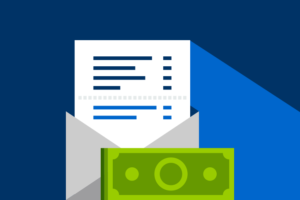Every day, organizations in every industry are turning to advanced, cloud-based software to help manage the changing needs of a dynamic workforce. This includes time & attendance software, which can help managers and leaders track and analyze time-on-the-clock data, and utilize key information to create schedules, help control costs, and measure productivity. Great—but how does […]
Read More >Paying Employees Current
- nettime solutions staff

Sometimes it can be tricky for employees to grasp how payroll works, especially if they’re recent hires and still getting used to your systems. Questions are sure to pop up:
- When does the pay period end?
- When do we have to turn in our hours?
- How long until payday?
And if they get caught trying to figure out what it means to pay employees current, or in arrears, and whether one is better than the other, things can get more complicated.
What’s the difference between paying in arrears vs. paying current?
Paid in Arrears
If you’re paying in arrears, then you’re paying employees for work they’ve already completed. In this scenario, the pay period generally ends somewhere between a week and 10 days before payday. Thousands of companies and organizations pay wages this way.
Paid Current
When you pay current, however, then your payroll department has to calculate a projected number of hours employees will work during the pay period, and process payment with projections in mind. Payday usually comes either immediately after the pay period ends, or sometimes while the pay period is still active.
For employees, it means getting paid right away for the work they’ve completed, or even before they finish their workweek. But for your payroll team, paying current can involve a lot of guesswork.
Whether you’re paying in arrears or current, you want to be sure you’re compliant with state and federal wage and labor laws. Explore the infographic, How stratustime Can Help Businesses Stay Compliant, and discover how risk management keeps an eye on legal and regulatory changes to inform our product developers, and benefit our customers.
Let’s imagine your company’s workweek goes from Monday – Sunday, and you distribute paychecks to non-exempt employees every Friday. If you pay current, how do you account for Saturday and Sunday?
To include these hours as part of payday, employees must proactively add their projected weekend hours in their timesheets based on their schedules. But what happens when employees work an additional shift unexpectedly?
Not having to worry about forecasting is one of the reasons why many employers pay in arrears, even if employees would rather be paid current. But when forecasting is part of scheduling and payroll, stratustime’s forecasting module comes into play:
- You can project and reconcile hours automatically. This can help you avoid paying employees for hours they might have projected but didn’t actually work.
- By being able to track employee hours via computer, mobile devices, and POS systems, stratustime automatically transmits time & attendance data to your payroll service.
- Doing so can help simplify payroll, shift scheduling, overtime payments, and monthly budgeting.

Which is Better? Paying Current or Paying in Arrears
It’s difficult to qualify whether paying current is better than paying in arrears, or vice versa. Like many HR-related topics, the idea of what’s better really comes down to the needs of your organization and your workers.
Every employer will want to make sure that they’re paying their employees in a way that’s consistent with current federal wage and labor laws, along with state and local laws as well. And this includes the timing of when you cut payments, and how often you pay workers.
Many employers simply prefer to pay in arrears because it may minimize their risk of wage and hour noncompliance. There can be risk for employees too.
While some might appreciate being paid current for work they’ve just completed—or even before they complete work that’s on their schedules—being paid in arrears helps take questions out of the equation. For instance, when employees are paid for work that they didn’t complete, there’s a chance that they might not actually complete it. When they’re paid in arrears, the employee won’t have to worry about ironing any discrepancies out during their next pay period.
The bottom line: whether you pay employees current or in arrears, it’s important for businesses to pay accurately and on time. stratustime continues to provide reliable services and support in order to help your company build schedules, track time, and take care of your people.
While many time & attendance software companies promise similar core functionality, stratustime is built around what companies need today and tomorrow. Give us a call, and learn more about all the ways we can put stratustime to work for you.




